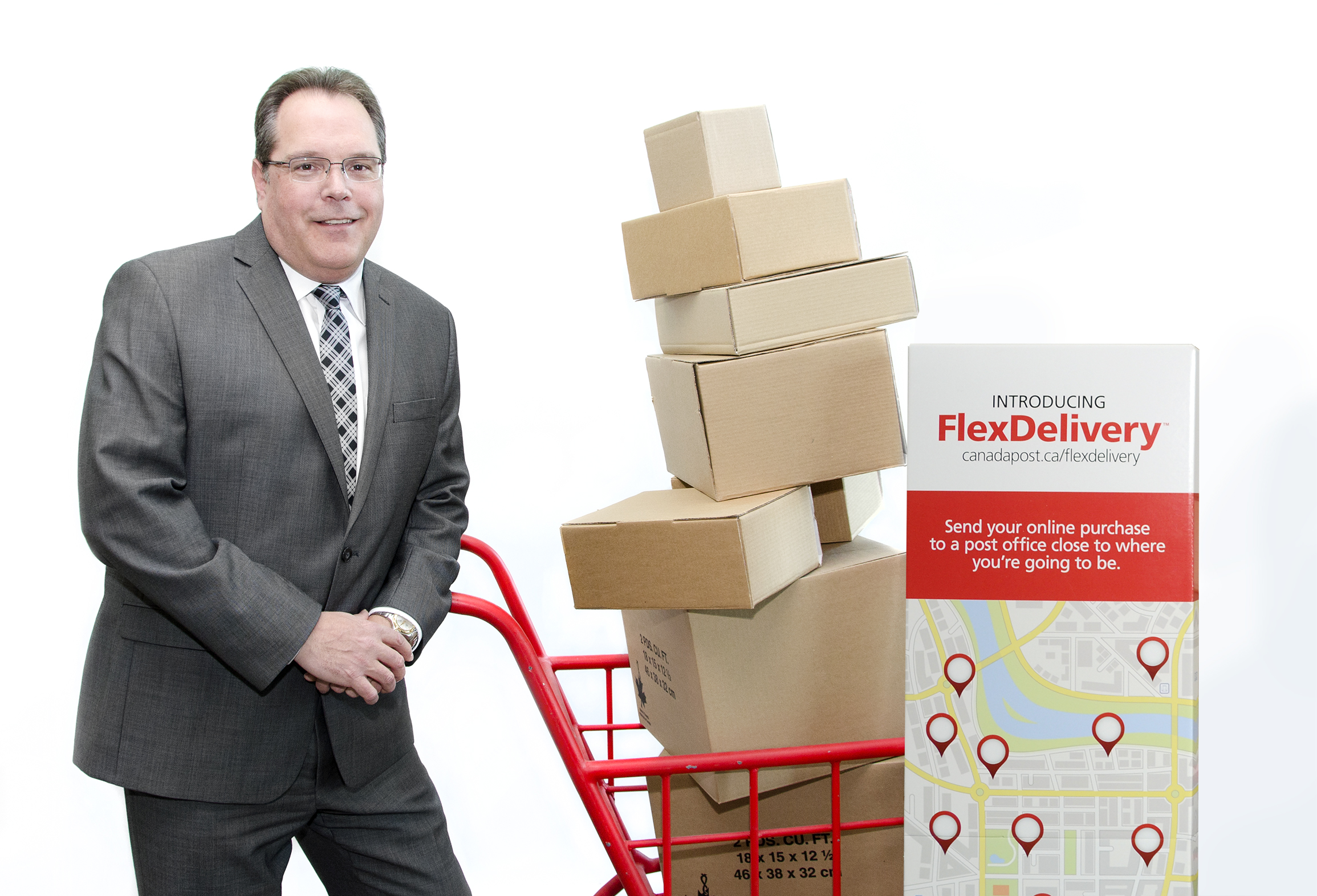
Flexible learning

Canada Post tells Post&Parcel that it has learned some valuable lessons from the launch and roll-out of its FlexDelivery service, which is coming up for its first anniversary. As the name suggests, FlexDelivery has been designed so that online consumers don’t have to wait at home for their deliveries, but can instead choose to have their parcels sent to any post office they choose. And that post office can be the one nearest to the customers’ home, their workplace, their childrens’ nursery, their favourite holiday retreat – in fact any post office, anywhere in Canada.
All told, there are about 6,000 post offices across Canada that consumers can choose from.
Consumers sign up for FlexDelivery on canadapost.ca. They choose their preferred post offices and they are given their own unique identification code and a FlexDelivery address to use for each location.
Next time they are shopping online, they simply choose to which of their FlexDelivery addresses they would want that particular item sent. When the item arrives at the post office, the customer gets an email letting them know it is ready for picking-up.
Clearly, FlexDelivery is a useful service for the busy online shopper who is almost never likely to be at home during the day, but it is also handy for those occasions – such as Christmas, birthdays and anniversaries – when you may not want a parcel delivered directly to your home because it would spoil the surprise.
What is really interesting about this service is that it is tailored to the needs of the consumer. While e-retailers are clearly benefiting from the initiative, FlexDelivery works because it is the consumer that is in the driving seat, making it happen. They are signing up for the service, selecting their own post offices, and then choosing the FlexDelivery option when they buy online.
And as FlexDelivery is a consumer-driven service, Canada Post knew that it had to take a very consumer-focused approach in its marketing and launch activity.
As Paul Bernard, Director of Product Management, Domestic Parcels, explained: “Back in 2012, we had launched a programme called “Deliver to Post Office”, where we focused on getting the merchants to participate. But, while the customers like the idea of directing the items to the post offices, it was taking a long time to get the merchants onboard.
“Now, with FlexDelivery, we are putting the power in the hands of the consumer, and that is a pivotal point, a big departure. When you have a consumer service, you have to sell the concept. You have a range of messages for the different consumer groups – it is not a one size fits all proposition – and you have to tweak and clarify the messages.”
There was also the question of operational training for the staff who would be handling the FlexDelivery packages.
In addition to the post offices staffed by its own people, Canada Post’s delivery network also includes “dealers” – businesses which incorporate retail post offices on their premises. These locations will typically have a higher turnover of staff than a Canada Post branch, and often there may be part-time or relatively inexperienced employees handling parcels. As a result, their training needs are different and they may require more detailed information. One of the features that Canada Post introduced for the dealers’ staff was a Green Button, which notified them when a FlexDelivery item was on its way to their outlet, and also gave them information on how to process it correctly.
Canada Post ran a beta launch in Ottawa in June 2014 and then a bigger “employee launch” in the fall.
According to Bernard: “This was a really valuable exercise which allowed us to test out the system before going fully live, and we learned two major lessons.
“Firstly, there was an issue about the time it took to send emails. We found that at peak times there could be a couple of hours between an item arriving at the outlet and the consumer receiving their notification email. This risked destroying the value proposition of the FlexDelivery service, so it was a problem we had to overcome – and I am pleased to say we did.
“Secondly, we found that if the staff in the outlet did not put away the FlexDelivery item correctly – if they stowed them in the PO Boxes section, for example – the notification email would not get sent. Again, this was an issue that we resolved prior to going live.”
“By the Spring of 2015,”continued Bernard, “we had sorted out the email issues, made sure that all the operational procedures and training were in place. So there was one last major piece of research to do.”
In fact, this was the most important piece of all: making sure that consumers could use – and would want to use – the FlexDelivery service.
“We assembled a group of 80 consumers,” explained Bernard, “we took them through the whole process. We sent them examples of the advertising and gauged their response.
“Then we got them to register online, and to try sending and receiving parcels. We asked them to ‘journal’ their experiences so that, at every stage, we could see what they thought of the service.
“The exercise meant that we could be confident that – when we went live – everything would work as it should. This was vital because, as we are a national post office, people have very high expectations of us; they are not prepared to give us the leeway that they might extend to a start-up.”
The beta launch, the employee training programme and the consumer “journaling” exercises ensure that Canada Post had a robust, fully-functional FlexDelivery ready for launch in May 2015 – but it still wasn’t “the finished product”. Indeed, FlexDelivery may never be that because Canada Post plans to continue updating and finessing the service to match consumers’ changing needs. For now, however, Bernard was pleased to report that “FlexDelivery is progressing exactly as we believed it would”.











